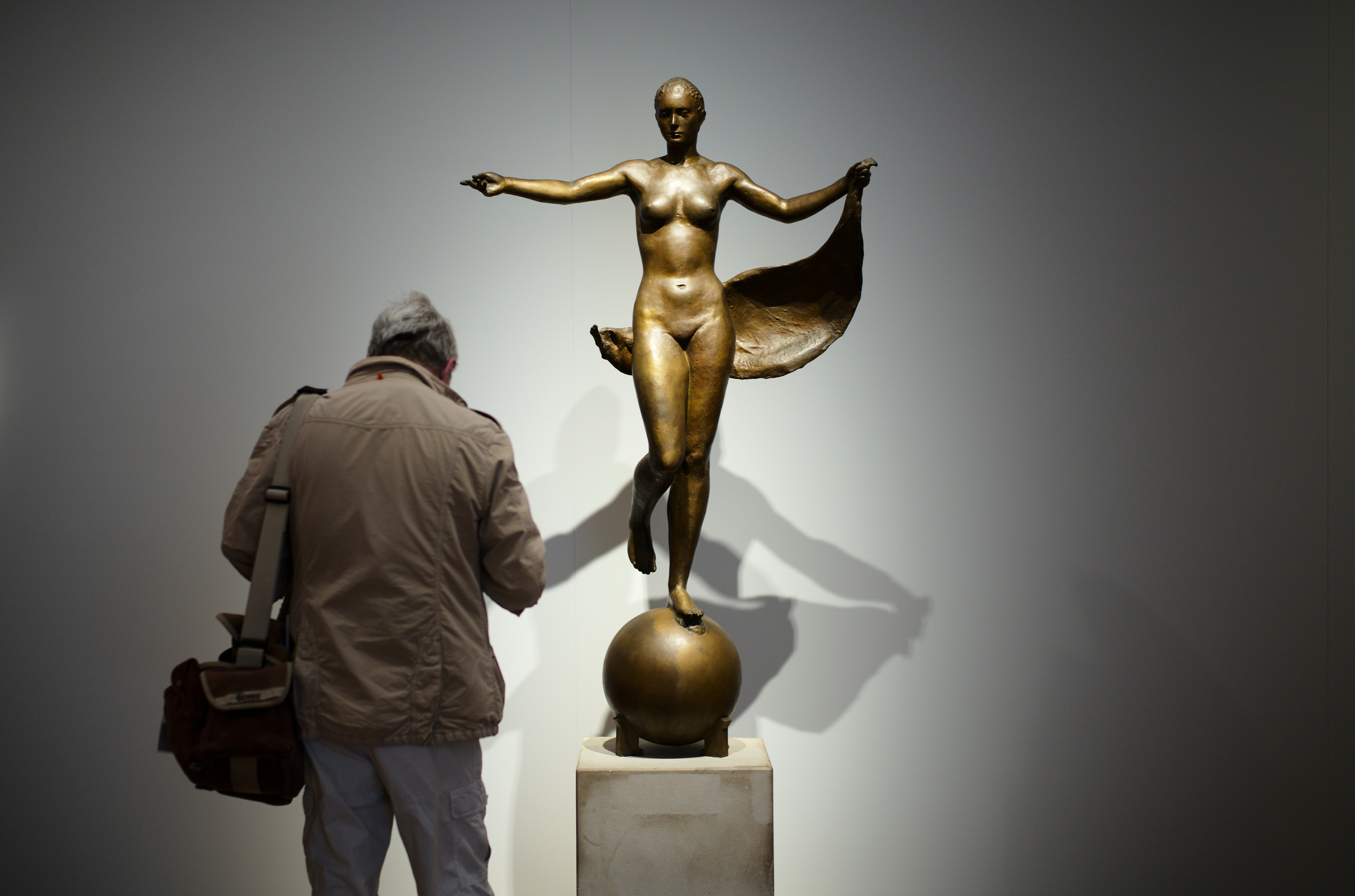German show traces Nazi-era artists' success after the war
A new show examining how some of the Nazis' favorite visual artists were able to successfully continue their work in postwar Germany is set to open in Berlin this week

Your support helps us to tell the story
From reproductive rights to climate change to Big Tech, The Independent is on the ground when the story is developing. Whether it's investigating the financials of Elon Musk's pro-Trump PAC or producing our latest documentary, 'The A Word', which shines a light on the American women fighting for reproductive rights, we know how important it is to parse out the facts from the messaging.
At such a critical moment in US history, we need reporters on the ground. Your donation allows us to keep sending journalists to speak to both sides of the story.
The Independent is trusted by Americans across the entire political spectrum. And unlike many other quality news outlets, we choose not to lock Americans out of our reporting and analysis with paywalls. We believe quality journalism should be available to everyone, paid for by those who can afford it.
Your support makes all the difference.A new show examining how some of the Nazis favorite visual artists were able to successfully continue their work in postwar Germany is set to open in Berlin this week.
“Divinely Gifted. National Socialism's favored artists in the Federal Republic” opens Friday at the German Historical Museum. It traces the careers and works of many who figured on a list of “Divinely Gifted" artists, compiled in 1944 on behalf of Adolf Hitler and Joseph Goebbels
In contrast, Jewish artists and those critical of the Nazis were defamed and persecuted while their works were banned from museums as so-called “degenerate art.”
The “Divinely Gifted” list contained the names of more than 100 painters and sculptors counted among the most important representatives of the National Socialists' cultural output. They were considered so useful to the Nazis' propaganda efforts that they were spared conscription into the armed forces.
Despite Germany's aspired new beginning after the end of World War II in 1945, and the de-Nazification process, many of these artists were rehabilitated and successfully pursued their careers for decades.
They received lucrative commissions from government, industry and church organizations, taught at art academies and were represented at exhibitions.
Their designs for statues, reliefs and tapestries on public squares or theaters left their mark to this day on the face of many German city centers, the exhibition shows.
“The fact that many of the renowned protagonists of the National Socialist art world continued to work successfully in the post-war decades was blended out of the influential art-historical narrative of a new beginning after 1945,” the show's curator Wolfgang Brauneis said.
“We are throwing light on this special topic from a contemporary historical vantage point and hope in this way to contribute to a revision of the art-historical canon and post-war modern art,” Brauneis added.
It's not just in the art world that people who enjoyed power and influence under the Nazi regime were able to continue their careers after the war in Germany. It also happened in the judiciary, government ministries, education, academia and elsewhere.
At the German Historical Museum, some 300 sculptures, paintings, tapestries, models, photographs, film and sound documents — accompanied by explanations and analysis — try to shed light on both the Nazi-era and the postwar careers of artists such as sculptors Arno Breker and Willy Meller.
Until the fall of the Third Reich, Breker was a professor of visual arts in Berlin and Hitler's official state sculptor. Despite his close ties with the Nazis, on whose patronage and goodwill he depended, Breker was allowed after the war to design sculptures for the city hall of the western city of Duesseldorf or insurance company Gerling in Cologne.
Meller created sculptures for Berlin's Olympic stadium in 1935, and designed others for the Nazis' Prora building complex on the Baltic coast — a gigantic holiday resort for German workers which was never completed.
After the war, Meller was tasked to create sculptures for German postal service Deutsche Post, and even made a memorial in front of the first German documentation center about the Nazis in the western city of Oberhausen.
Often, the continued presentation of work by the Nazis' favorite artists was met with no or little resistance by the public in the first postwar years. That perception only changed slowly starting in the 1960s, when the younger German generations publicly began to question the atrocities committed by the Third Reich.
The “Divinely Gifted” show runs through December 5 and is accompanied by curator tours in Berlin, Munich, Duesseldorf and Vienna to some of the artists' works in those cities.